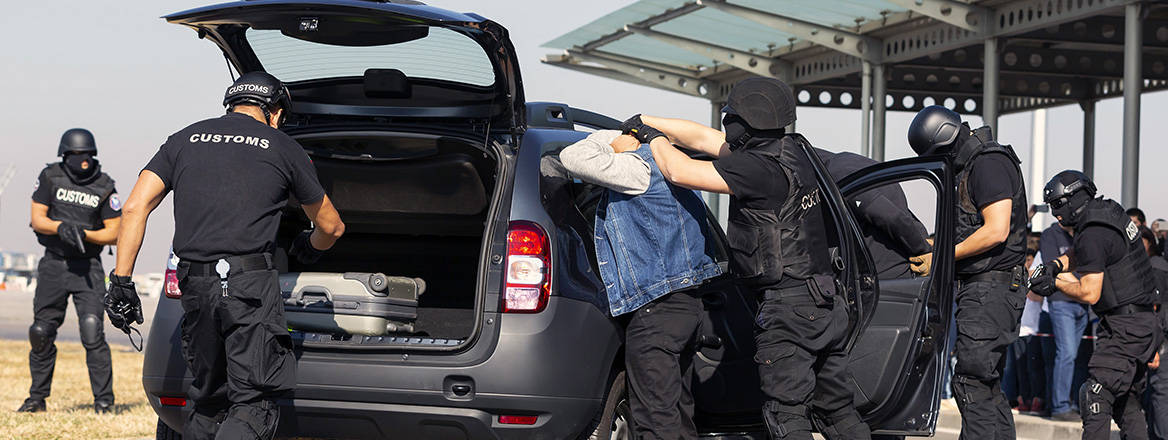The UK government’s new strategy for tackling drugs contains a welcome emphasis on treatment, but falls short in other areas.
On 6 December, the UK government announced its plan for ‘real change’ in drug markets to reduce the overall use towards the lowest it has been for 30 years. The policy, entitled ‘From harm to hope: A 10-year drugs plan to cut crime and save lives’, has broadly been welcomed by law-enforcement agencies, other statutory authorities, drug outreach workers and political commentators alike.
The strategy will allocate £780 million in funding for the drug treatment system in England, together with £300 million for combating supply through the county lines business model. It also contains the ambitious target of dismantling more than 2,000 lines, with £145 million going to a programme to target road and rail networks used by gangs and the goal of carrying out up to 6,400 disruptions against the activities of organised criminals involved in the supply of drugs.
On public health, the government hopes to prevent approximately 1,000 drug-related deaths, deliver at least 54,000 new high-quality treatment places and help prevent 750,000 drug-related crimes by the end of 2024/25.
Why This Commitment?
The UK drugs market is a business worth an estimated £9.4 billion a year. An estimated three million people took drugs in England and Wales in 2019; in England, 300,000 of these took the most harmful drugs such as opiates and crack cocaine.
At over 4,500 drug deaths in England and Wales, 2020 represented the highest levels since records began, with drug deaths 3.8% higher than the previous year. The societal costs of the drug industry are placed at nearly £20 billion a year in England alone, involving costs associated with burglaries, robberies and shoplifting carried out by more than 300,000 heroin and crack addicts.
For the first time, the new strategy places the onus on treatment rather than enforcement – a refreshing departure from previous drug strategies. It has been argued for a long time that drugs represent a societal rather than a policing challenge.
The strategy acknowledges for the first time that the answer does not lie in law-enforcement agencies hoping to arrest their way out of the problem
Successive strategies, nonetheless, have always put the onus firmly on the police. Yet, as Dame Carol Black – who was commissioned by the government to conduct an independent review of drugs – recognises, the key institutions involved (the National Crime Agency, police forces and Border Force) have all faced severe budgetary constraints in the past decade, as well as competing priorities. Black argues that even if these organisations were sufficiently resourced, it remains unclear that they would be able to bring about a sustained reduction in drug supply given the resilience and flexibility of illicit drug markets.
The strategy argues that it is the first ever drug strategy that commits the whole of government and public services to work together and share responsibility for creating a safer, healthier and more productive society. Expressed more simply, it has been publicly acknowledged for the first time that the answer does not lie in law-enforcement agencies hoping to arrest their way out of the problem.
A New Ray of Hope?
Critics have been quick to point out that the money barely makes up for the cuts to drug services and policing in England over the last decade. However, the settlement goes beyond the recommendation for treatment services made by Dame Carol Black in her review of drugs published in 2020.
How the public will react remains to be seen. BBC correspondent Mark Easton argues that voters will still want politicians to sound and act tough, with the focus firmly on police bashing in doors, rather than working under the radar to help those with an addiction to get their lives back on track. Yet this style of ‘symbolic policing’ does little to reduce drug harms; quite the opposite, it often exacerbates them as the seized drugs and/or money need to be replaced by criminal operators. But it does help assuage the concerns of the public, who want to see that the police are doing something in their neighbourhood.
Public opinion is relevant to those with a drug addiction too; they are often seen as less worthy and deserving of support services than others. Politicians will need to convince their constituents that treatment is in society’s wider interests, but we can still expect to see crash-helmeted police officers on dawn raids, regardless of the utility of the exercise in relation to reducing drug harms.
Meanwhile, the metrics for measurement within the new strategy represent nothing new. Success in the reduction of drug supply will continue to be measured by the volume of class A drugs seized, purity levels of heroin and cocaine and the number of disruptions achieved. Greater volumes of seizures, however, are not an indication of reduction of supply; one large seizure can skew the figures substantially for a given period. Addicts reporting a shortage of availability is a better indicator that drug supply has become scarcer.
Furthermore, £9 million has been earmarked for an out-of-court disposal scheme to bring a ‘relevant and proportionate consequence’ for casual users. However, attempting to reduce drug use among occasional users is unlikely to have a material impact on drug market revenues. Successive campaigns highlighting the environmental and humanitarian costs of the drug trade have done nothing to dissuade casual users. It remains to be seen whether the prospect of losing passports and/or driving licences will have any impact.
Disappointingly, the drug strategy is silent on how to prevent the use of children in the drug distribution model
There is one glaringly obvious omission from the drug strategy in relation to the use of children to move drugs and cash in the county lines drug distribution business model. Young people have been drawn into drug supply at an alarming scale at the most violent end of the market. The correlation between young people being pulled into county lines and an increase in child poverty, the number of children in care and social exclusions is increasingly evident. Social media plays a facilitating role in the grooming of children and vulnerable persons. They are often exploited, coerced and forced to sell drugs through a system of debt bondage and use or threats of severe violence to protect their criminal masters. Some 27,000 young people now identify as gang members – many drawn into drug dealing – encountering increasingly violent situations on a daily basis. These children in the main are not drug users; they will not benefit from drug treatment programmes of the type promised in the new strategy.
Very little was known or written about county lines prior to the middle of the last decade. In a relatively short period of time, our collective knowledge has increased immensely. In 2018, the National County Lines Coordination Centre (NCLCC) was established to coordinate law-enforcement and partner agency understanding and responses to the phenomenon. Although only three years old, it appears to have met that brief of coordinating intelligence across law-enforcement agencies. However, to many, it is a law-enforcement agency, an organisation ‘by the police for the police’, despite claims to the contrary.
Disappointingly, despite knowledge of the involvement of children and young persons in the supply of the most harmful drugs, the drug strategy is silent on how to prevent the use of children in the drug distribution model. Use of the Modern Slavery Act 2015 to try to convict criminal masters of trafficking children and vulnerable adults has not produced the intended consequences. Prosecutions are few. It is argued that knowledge of the use of the Act and anti-trafficking/slavery Prohibition Orders is increasing, and the NCLCC is pushing that forward, but in the main victims are too scared or unwilling to provide testaments that will help convict their exploiters.
Although it is argued that a conviction for modern slavery is a stain on a person’s reputation, while a drug conviction is often seen as a badge of honour, the evidence does not back this up. Meanwhile, delays in the court processes caused by the coronavirus pandemic and delays in the use of the National Referral Mechanism (a framework for identifying and referring potential victims of modern slavery and ensuring they receive the appropriate support) mean that justice is neither swift, nor frequently forthcoming when pleas for drug offences are offered in return for dropping the slavery charges.
In the meantime, increasing numbers of children are drawn into the promise of making a quick buck, when in most cases they will make very little money and fall victim to abuse, physical and sexual violence. It is not these children alone who are at risk, but often their siblings and other family members too. Faced with this situation, something different is required to fulfil our legal and moral obligation to protect children, and the drugs strategy presented a chance to embrace that opportunity. It chose not to.
The views expressed in this Commentary are the author’s, and do not represent those of RUSI or any other institution.
Have an idea for a Commentary you’d like to write for us? Send a short pitch to commentaries@rusi.org and we’ll get back to you if it fits into our research interests. Full guidelines for contributors can be found here.
WRITTEN BY
Dr Keith Ditcham
External Author | Former RUSI Senior Research Fellow


